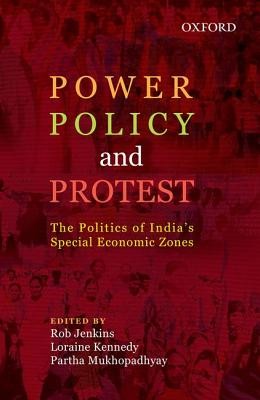
- We will send in 10–14 business days.
- Author: Rob Jenkins
- Publisher: Oxford University Press, USA
- ISBN-10: 0198097344
- ISBN-13: 9780198097341
- Format: 14.2 x 21.8 x 3.3 cm, kieti viršeliai
- Language: English
- SAVE -10% with code: EXTRA
Reviews
Description
India's attempt to spur growth, boost exports, and create jobs by establishing Special Economic Zones (SEZs) is a paradox: the policy represents an intensification of the country's increasingly market-oriented development paradigm, but implementation has required active government involvement. More than a decade after importing the SEZ concept from China, India has hundreds of these walled-off, deregulated, low-tax enclaves. But an industrialization strategy pioneered in authoritarian China has faced huge political resistance in democratic India. Protest movements arose in many localities where SEZs were proposed. Resistance varied in terms of the intensity and sustainability of opposition, the grievances articulated, and the tactics employed. A central issue has been the alienation of privately owned land by business interests, abetted by the state. To date, no systematic study of the politics of India's SEZ experiment has been undertaken. This book remedies this gap, examining
variations within and between eleven states. Detailed case studies investigate differences in the nature and extent of SEZ-related political mobilization and the means employed by governments to manage dissent. By covering a broad range of regional contexts, industrial sectors, and political conditions, this volume furnishes a comprehensive picture of the politics surrounding one of India's most controversial reform measures.
EXTRA 10 % discount with code: EXTRA
The promotion ends in 22d.01:17:17
The discount code is valid when purchasing from 10 €. Discounts do not stack.
- Author: Rob Jenkins
- Publisher: Oxford University Press, USA
- ISBN-10: 0198097344
- ISBN-13: 9780198097341
- Format: 14.2 x 21.8 x 3.3 cm, kieti viršeliai
- Language: English English
India's attempt to spur growth, boost exports, and create jobs by establishing Special Economic Zones (SEZs) is a paradox: the policy represents an intensification of the country's increasingly market-oriented development paradigm, but implementation has required active government involvement. More than a decade after importing the SEZ concept from China, India has hundreds of these walled-off, deregulated, low-tax enclaves. But an industrialization strategy pioneered in authoritarian China has faced huge political resistance in democratic India. Protest movements arose in many localities where SEZs were proposed. Resistance varied in terms of the intensity and sustainability of opposition, the grievances articulated, and the tactics employed. A central issue has been the alienation of privately owned land by business interests, abetted by the state. To date, no systematic study of the politics of India's SEZ experiment has been undertaken. This book remedies this gap, examining
variations within and between eleven states. Detailed case studies investigate differences in the nature and extent of SEZ-related political mobilization and the means employed by governments to manage dissent. By covering a broad range of regional contexts, industrial sectors, and political conditions, this volume furnishes a comprehensive picture of the politics surrounding one of India's most controversial reform measures.


Reviews